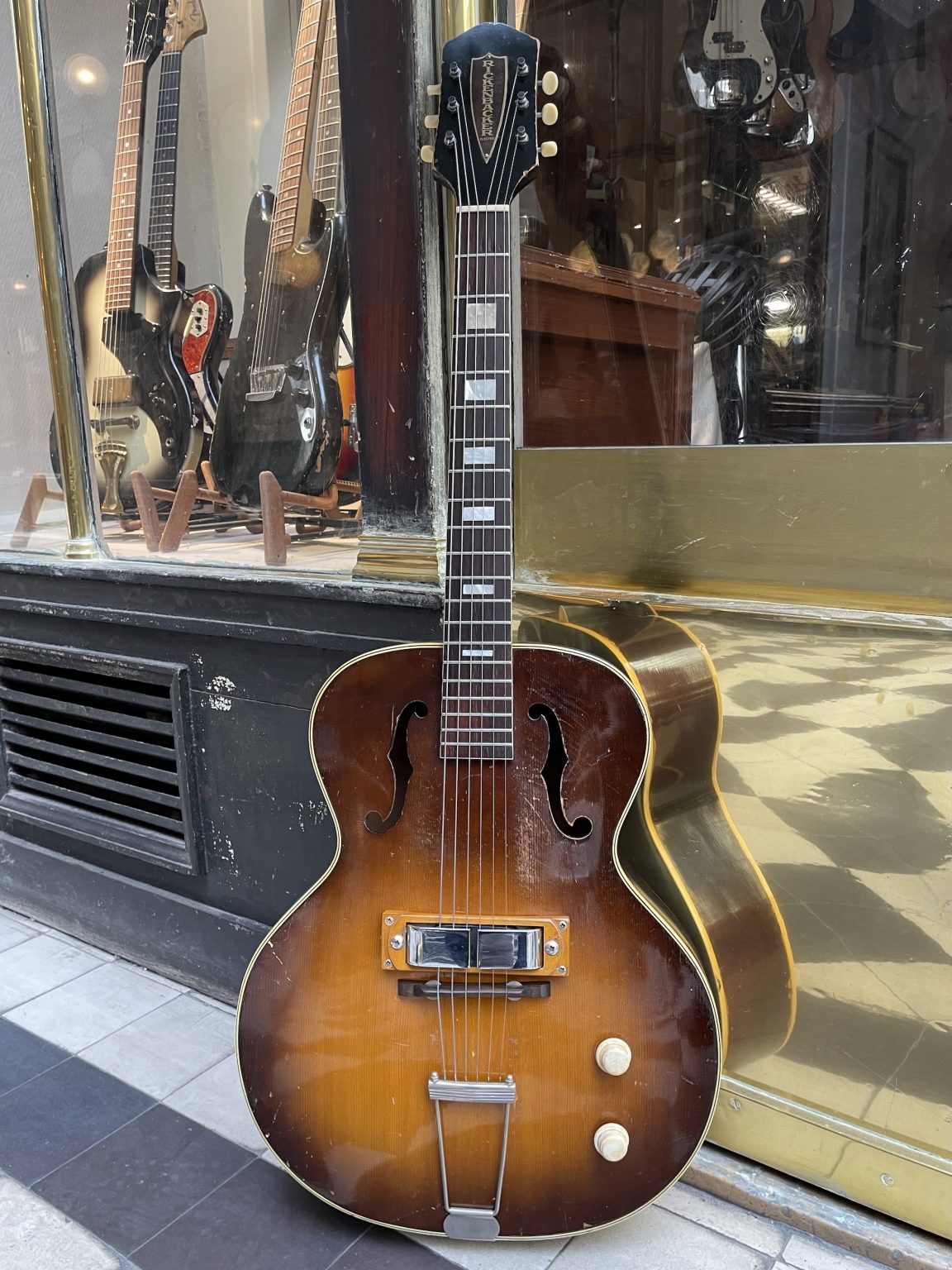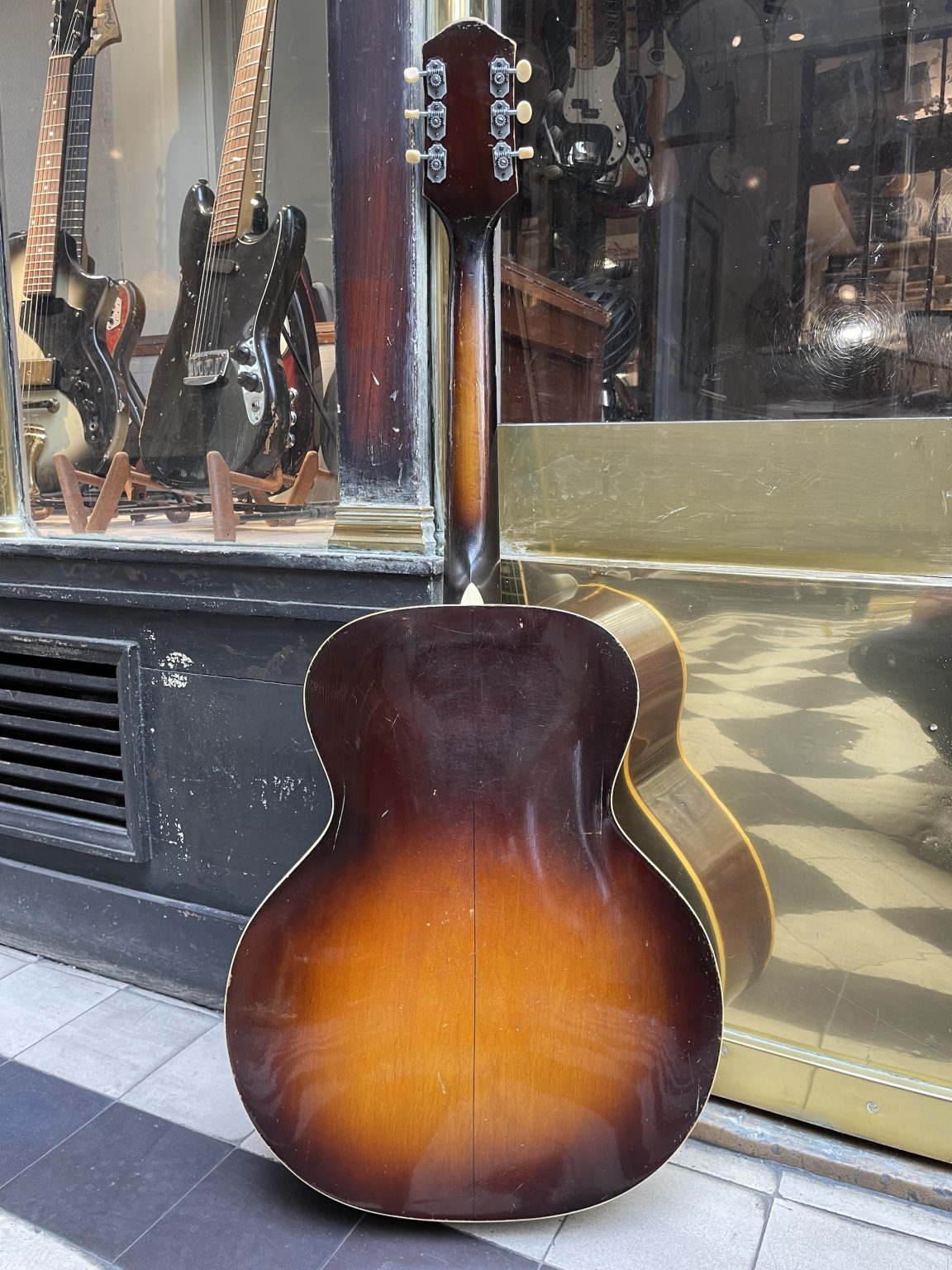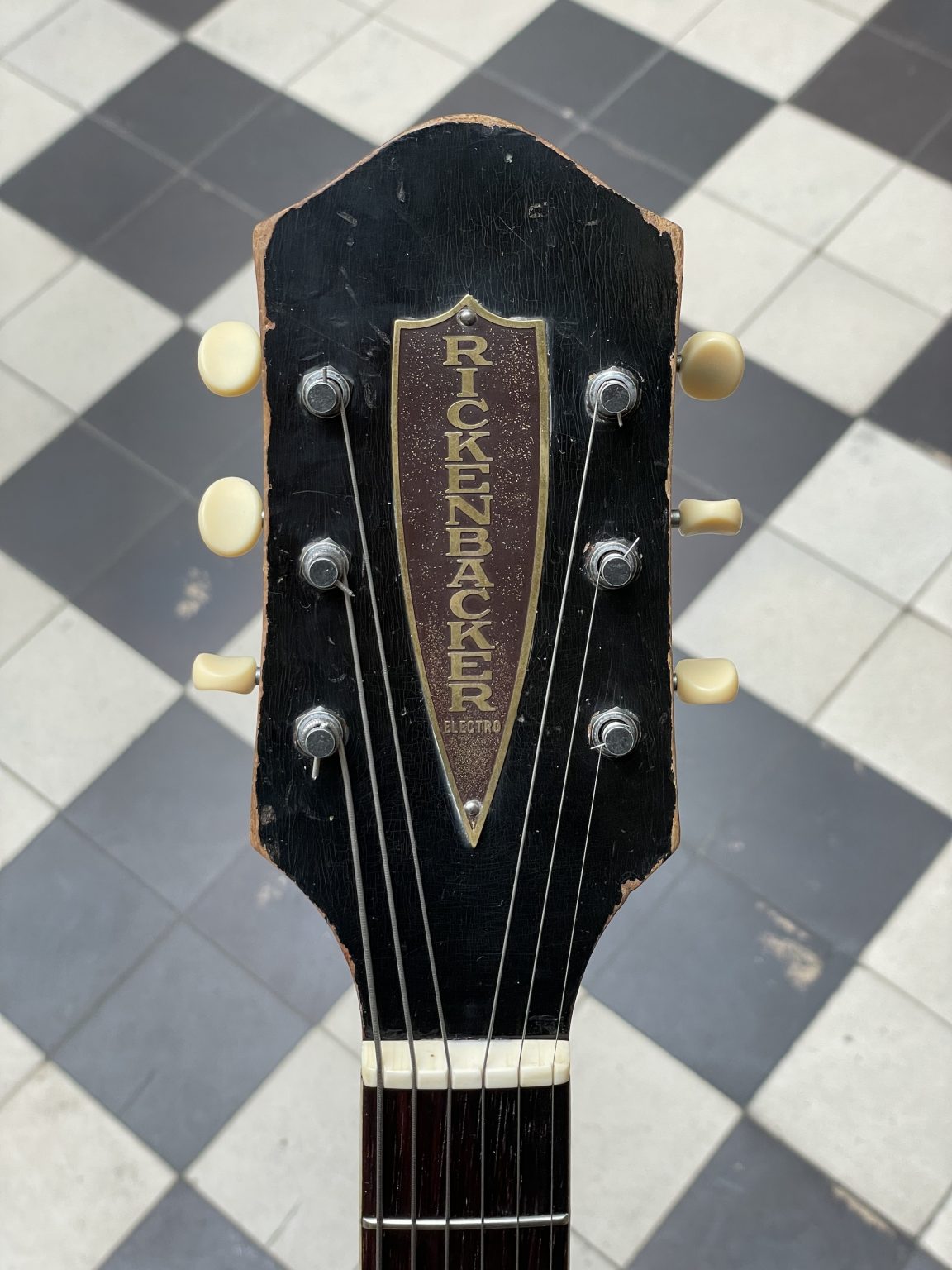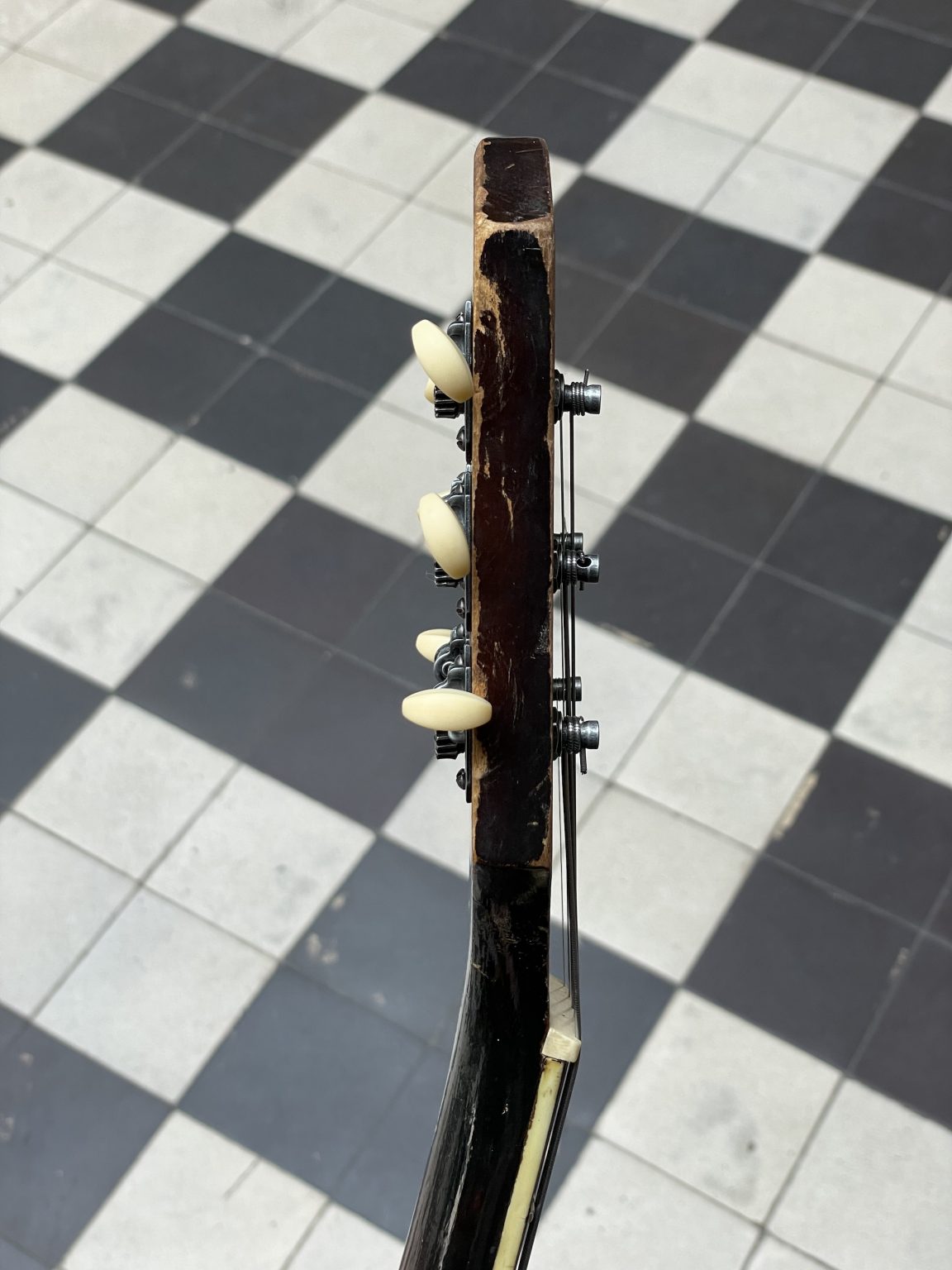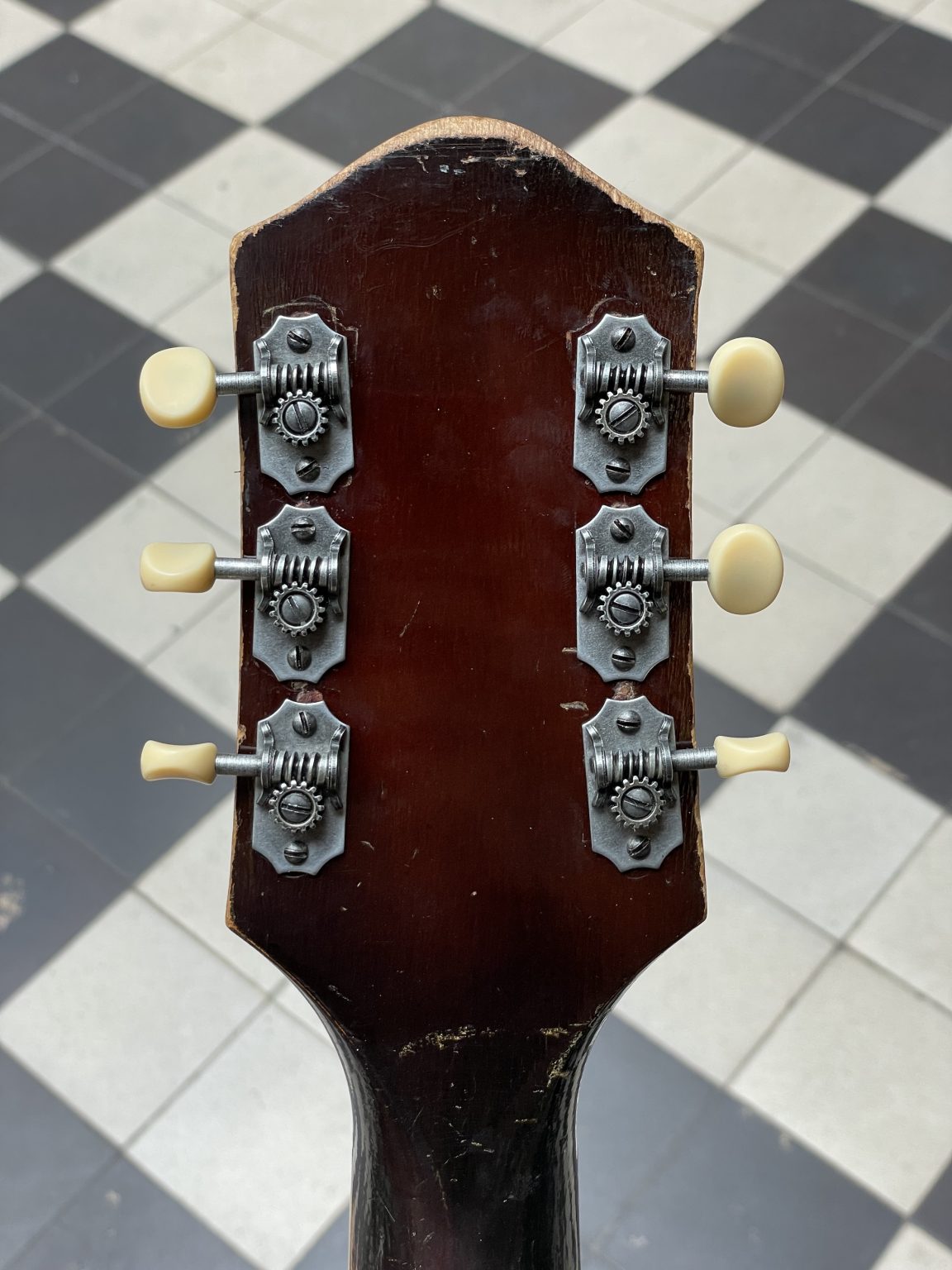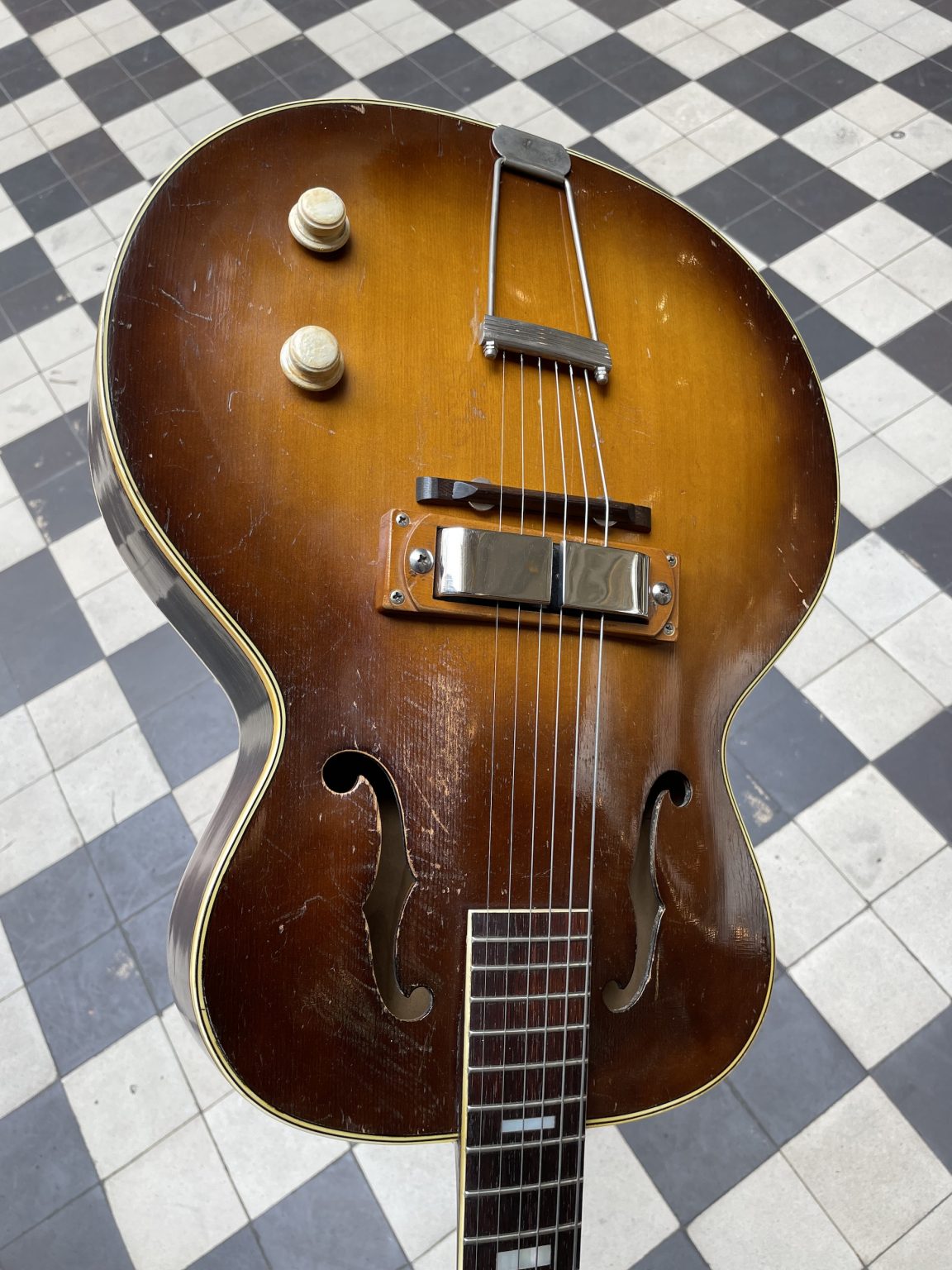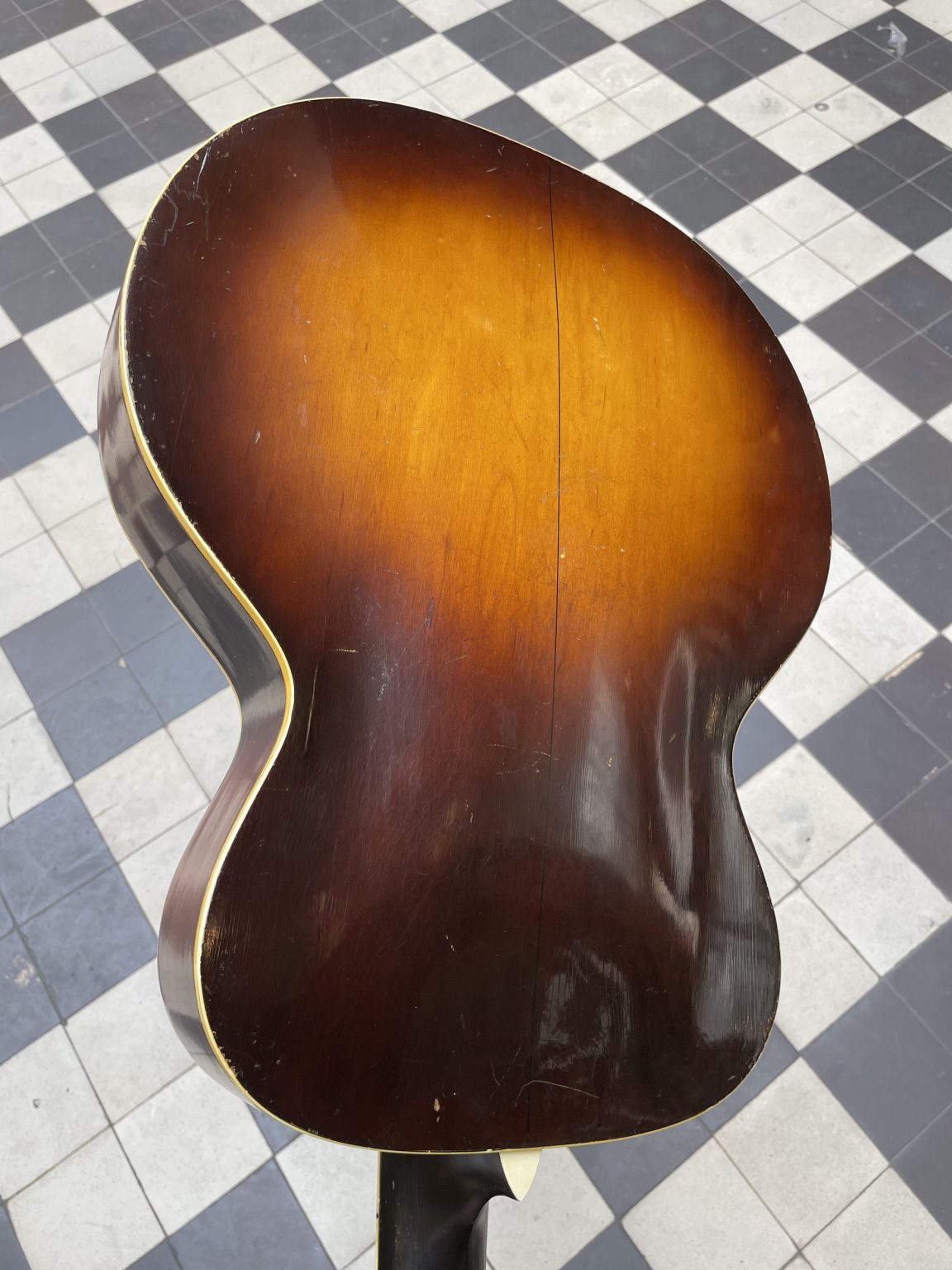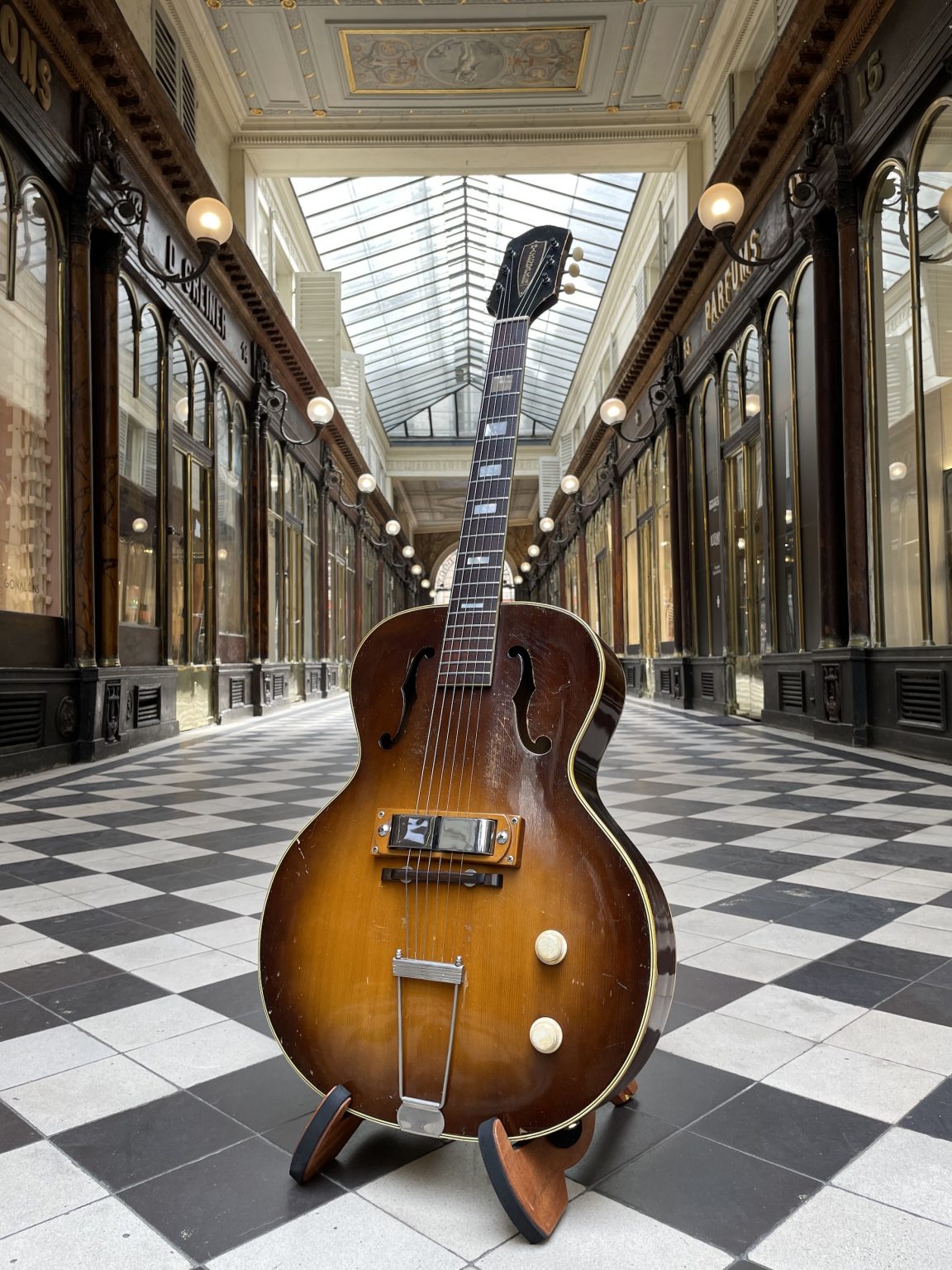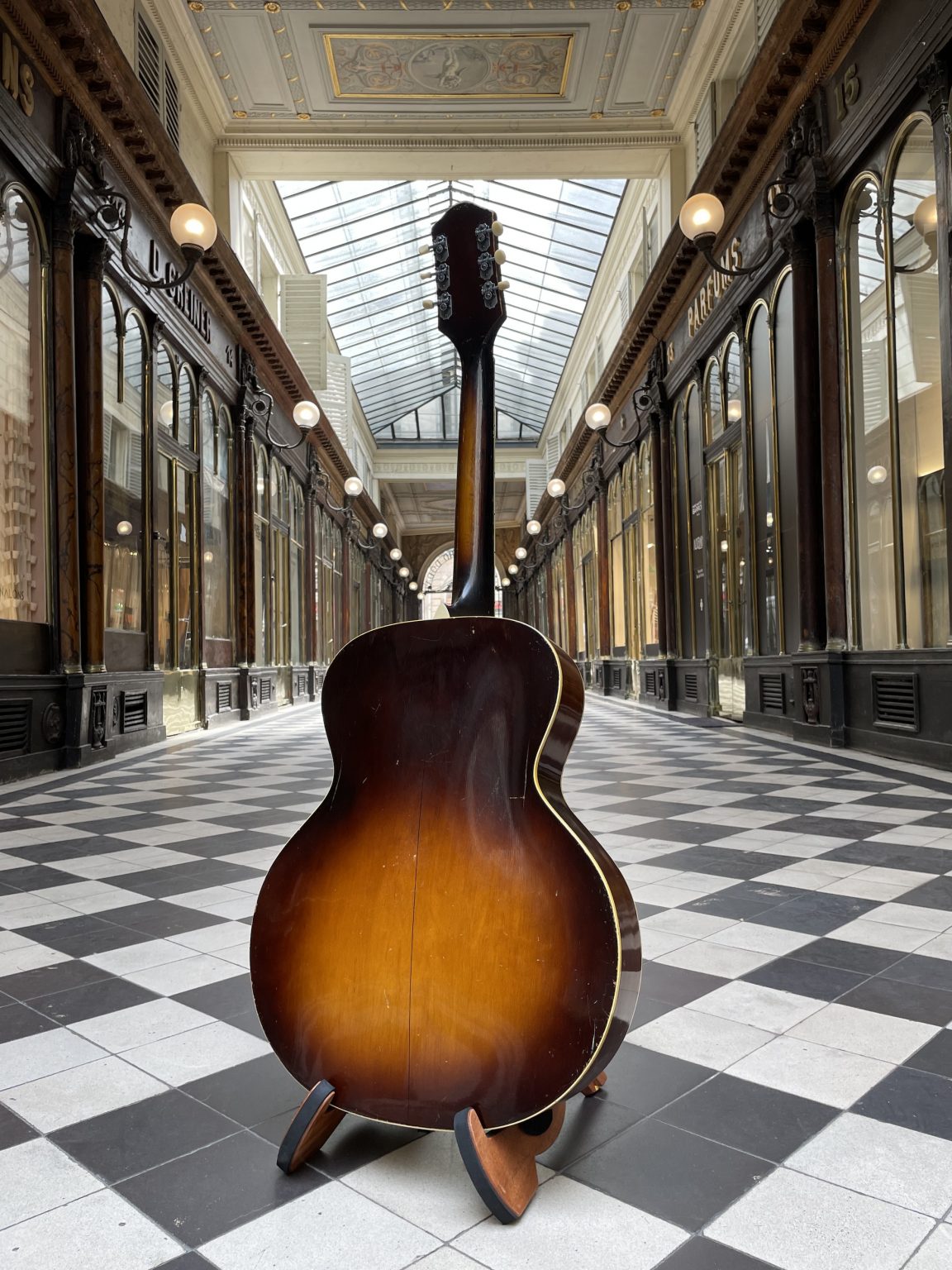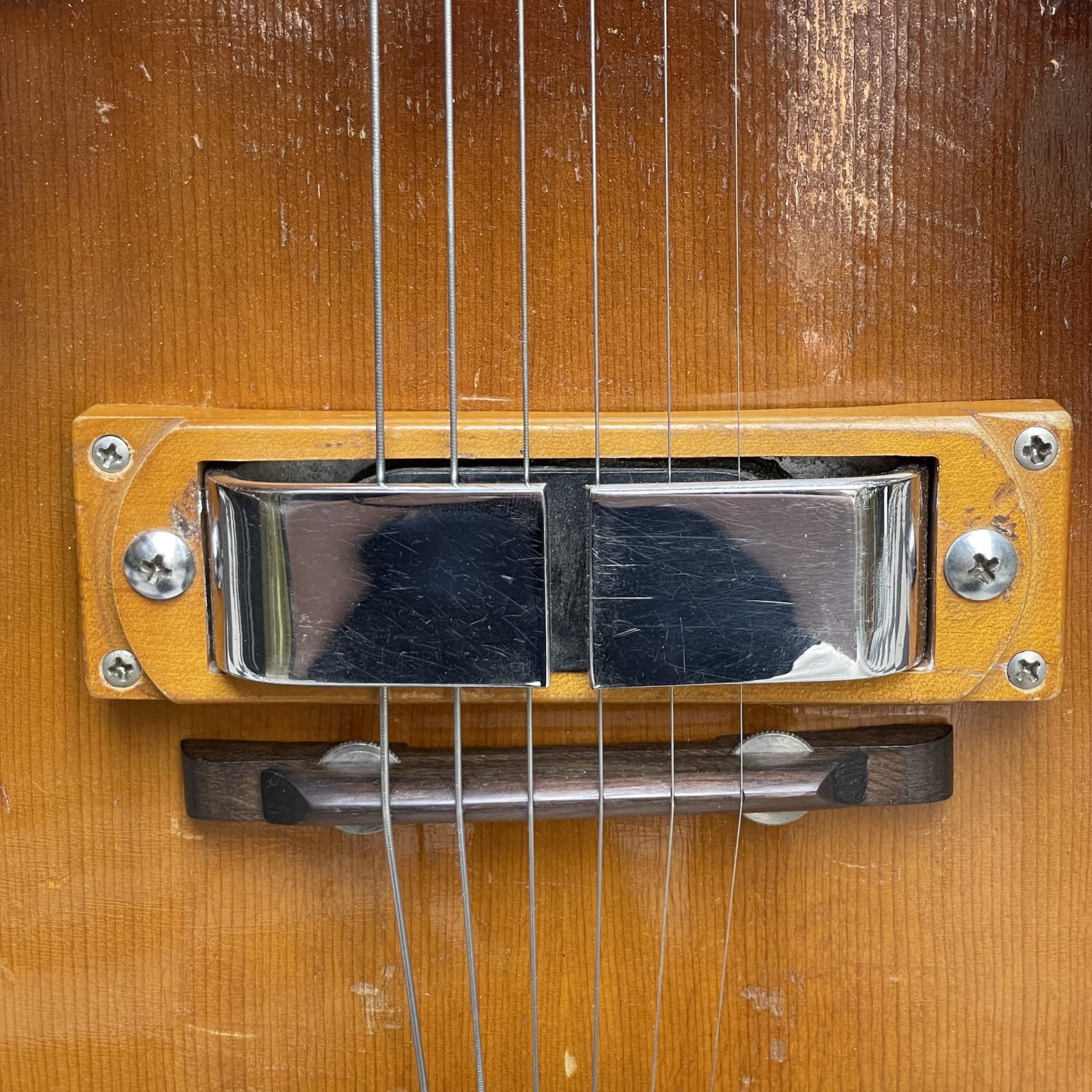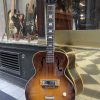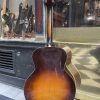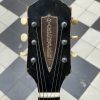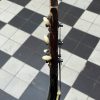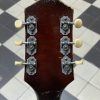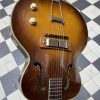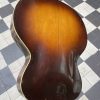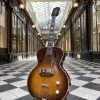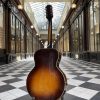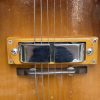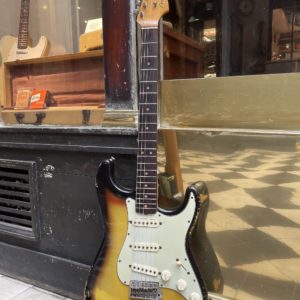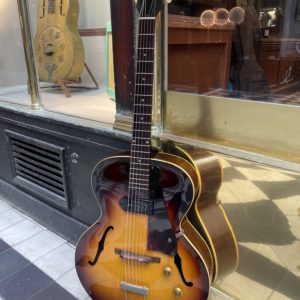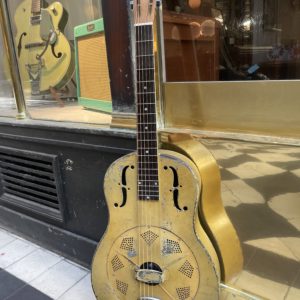c.1949 RICKENBACKER SP
The prices indicated correspond to the price in the case of payment in-store or by bank transfer. In the case of payment by credit card via the website, a processing fee of [3.25% + €0.25]* will be applied to the total amount of the basket, including delivery costs.
Extremely rare Rickenbacker SP produced circa 1949, in very good condition and playable.
For the 21st-century guitarist, the name Rickenbacker will likely immediately conjure up images of John Lennon and George Harrison with their iconic 325 and 360/12 models in the early 1960s—or later, in the 1970s, a Paul McCartney or Chris Squire with 4001 basses. However, the Rickenbacker saga began long before that, at the dawn of the 1930s. Led by George Beauchamp and Paul Barth (two leading figures at the National resonator guitar manufacturer), in partnership with Adolph Rickenbacker (an engineer and metalworker specializing in metal stamping, notably producing bodies and stamped metal parts for National instruments), the company was founded with a clear goal: to develop a functional and commercially viable electric guitar. The idea of electric stringed instruments had existed since the late 19th century, and in the preceding decades, experiments had been carried out with microphones and pickups for the banjo, guitar, and violin, not to mention related efforts to develop electric pianos and organs.
Pairing information from various sources, we know that by the late 1920s, primitive electric guitars were indeed in existence. These include the productions of Stromberg-Vosinet (later renamed Kay) and Vivi-Tone (launched in 1932 by Loyd Loar, the former Gibson “acoustic engineer” whose electrical experiments date back to 1928-1929). These instruments were promising but severely limited in the fidelity of electrified acoustic sound due to the processes used: piezoelectric cells or transducers similar to a telephone pickup. The revolution sparked by Beauchamp and Rickenbacker was specifically enabled by the type of pickup they invented: six metal poles surrounded by a coil were arranged under the instrument’s strings, the whole surrounded by two large horseshoe-shaped magnets (hence the nickname “horseshoe pickup”). It was a precursor to the electric guitar pickup as we know it today in 2025, even though its design dates back to 1931! The sound reproduction was much more faithful and musically pleasing than previous designs, and as a result, Rickenbacker instruments (mainly lapsteels) were quickly adopted by Hawaiian musicians and those playing in dance bands.
Alongside the bulk of production focused on Hawaiian electric guitars, Rickenbacker also offered Electric Spanish models from 1933 (meaning standard guitars equipped with a pickup – in the US, the terms Hawaiian and Spanish are traditionally used to distinguish between guitars laid flat for slide playing and those played normally, by fretting the notes). The Electric Spanish models featured the same horseshoe pickup and electronics as the lapsteels, but the construction of their bodies was subcontracted to Harmony in Chicago – Rickenbacker was not equipped at the time for the lutherie work necessary for the end-to-end production of wooden guitars, as was the case for its neighbor National, which had also entrusted the lutherie of its Trojan or Aragon models to Harmony. Thus, Rickenbacker would offer this type of instrument throughout the 1930s, until the United States entered World War II at the end of 1941 when, like other American musical instrument manufacturers, guitar production was suspended in favor of goods intended to support the war effort. At the end of the conflict, normal operations resumed at the factory, where the flagship product remained the lapsteel – this continued until Adolph Rickenbacker sold his company to F.C. Hall in 1953, marking the beginning of Rickenbacker’s second era. It was during this half-decade that the instrument presented here was born: the Rickenbacker SP. This model is particularly rare among Rickenbacker Spanish guitars, produced in very small quantities and quickly abandoned due to the excessive cost of producing the wooden body (once again, this was subcontracted but we have no testimony identifying the company in charge for this operation).
The result is this guitar that is, to say the least, surprising: the body is made of a solid spruce soundboard with parallel bracing and sound holes placed at the height of the fingerboard; the arched back and sides are made of maple – this construction recalls the last version of the pre-war Gibson ES-150; the instrument has a beautiful Sunburst finish ranging from light brown to amber yellow. The neck is made of a single piece of maple, with a rosewood fingerboard, with the headstock bearing a badge with the manufacturer’s name. The pickup is mounted on a wooden support, and associated with the usual volume and tone controls. This guitar has no serial number or markings, the only element allowing its dating is the code on the potentiometers – late 1948, which suggests construction of the instrument during the year 1949. The tuners have been replaced by a set of reproduction parts. We have applied ourselves to extensive lutherie work to restore this guitar’s full playability and musical qualities: neck reset; fingerboard planning; complete refret; crafting of a new bone nut; complete action and intonation adjustment; electronics cleaning and pickup adjustment—all these restoration operations carried out in our workshop allow this guitar to function as it did on its first day while preserving the original key parts that make its identity and value.
Sold in its original chipboard case, in perfect playing condition.


